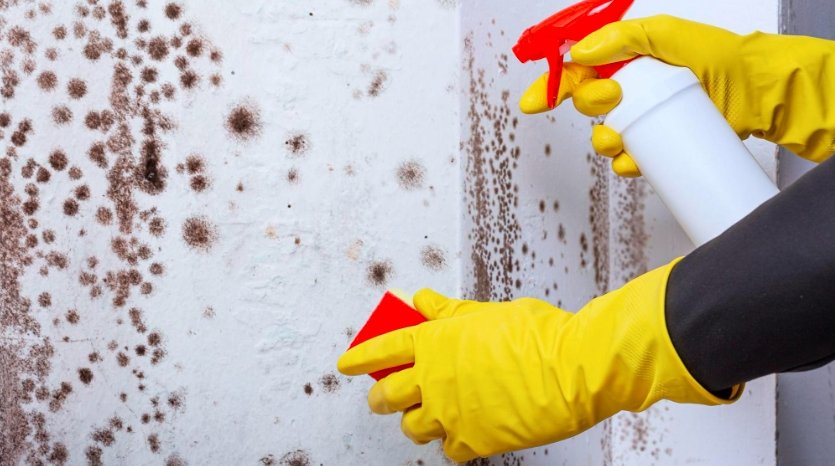Thousands of homes across Scotland are officially not fit for human habitation — and the problem is far worse than many believed. A dramatic rise in homes falling below legal standards has exposed what campaigners now call an “endemic of disrepair,” with damp, mould, and unsafe conditions plaguing both public and private housing stock.
While the Scottish Government is preparing new legislation to fix the crisis, The Herald can reveal that nearly 100,000 privately rented homes will remain untouched by proposed reforms — leaving some of Scotland’s most vulnerable tenants behind.
The Shocking Scale of the Crisis
According to the Scottish House Condition Survey, around 729,000 homes — nearly 27% of all dwellings — now fall below the tolerable standard, meaning they are legally considered unfit for human habitation. That figure stood at just 54,000 (2%) in 2018, highlighting a surge of more than 600,000 substandard homes in only five years.
Much of that spike is linked to a 2022 legal change that mandated smoke, heat, and carbon monoxide alarms in all rented properties. The update, aimed at saving lives, has unintentionally revealed the scale of hidden non-compliance — and systemic neglect.

Understanding the Tolerable Standard
Under the Housing (Scotland) Act 1987, a home that falls below the tolerable standard is not considered habitable. It includes requirements such as:
-
Structural stability
-
Safe and modern electrical systems
-
Adequate lighting and ventilation
-
Suitable cooking facilities
-
Freedom from rising or penetrating damp
-
Protection against fire and CO hazards
Local councils have the legal power to intervene, including enforcement notices and compulsory repair orders, though campaigners say these are rarely used.
Privately Rented Homes Most at Risk
An estimated 100,000 privately rented homes fall below this minimum threshold. That’s nearly twice the rate found in the socially rented sector, where landlords are subject to the Scottish Housing Quality Standard (SHQS).
Unlike the SHQS — a policy framework that focuses on energy efficiency, safety, and damp-free living — the tolerable standard is a statutory baseline, and failure to meet it renders a home effectively condemned.
Despite this, private landlords remain exempt from many of the upcoming government reforms.
“This is a legal and moral failure,” said a spokesperson from Living Rent, a tenants’ rights organisation. “We’re talking about people living with black mould, unsafe wiring, and chronic damp — in legally uninhabitable homes — and the law does not require private landlords to fix it.”
Damp and Mould: The Hidden Epidemic
The problem of damp and mould is particularly widespread:
-
270,000 homes in Scotland (10% of all properties) are affected by mould
-
81,000 are suffering from rising or penetrating damp
-
Tenants report increased health issues, including respiratory illness in children
Cases like Leighton Ure, a toddler who nearly died due to severe mould in his council flat, have triggered public outrage. His mother, Michelle Ure, is calling for urgent reforms to protect families like hers. Her campaign has inspired calls for new legislation to be named “Leighton’s Law.”
The Legislative Gap: Awaab’s Law Doesn’t Apply
In England and Wales, Awaab’s Law — named after two-year-old Awaab Ishak, who died due to prolonged exposure to mould — will soon require social landlords to investigate and remediate damp and mould within fixed timeframes.
But in Scotland, no such legal deadlines exist.
The Scottish Government has proposed amendments to the Housing (Scotland) Bill that would give ministers new powers to set mandatory repair deadlines. However:
-
These reforms are expected to apply only to social landlords
-
Private tenancies will be excluded, despite accounting for much of the disrepair
-
No fixed deadlines or penalties have yet been announced
-
“Scotland must not fall behind,” said housing campaigner Shelter Scotland. “Awaab’s Law is being watered down in Scotland — and it risks leaving behind the very tenants who need protection most.”
What Is the Government Doing?
Ministers say they are consulting on a package of reforms aimed at addressing the crisis:
-
Amending the Housing (Scotland) Bill to allow repair deadlines for serious disrepair
-
Introducing long-term rent controls in the private sector
-
Placing a duty on local councils to assess private sector housing stock
-
Working with the Scottish Housing Regulator to improve compliance by social landlords
The Regulator has issued guidance urging landlords to adopt proactive systems for identifying and addressing damp and mould. Still, these are non-binding recommendations, and enforcement remains patchy.
A Widening Housing Divide
| Housing Type | Below Tolerable Standard (2023) | Damp/Mould Issues | Reform Coverage |
|---|---|---|---|
| Privately Rented | ~100,000 homes | High | Excluded |
| Social Rented | ~54,000 homes | Moderate | Included |
| Owner-Occupied | Majority of total affected | Varies | Excluded |
| Total (All Types) | ~729,000 homes (27%) | ~270,000 homes | Partial |
The figures add to what many are now calling a full-blown housing emergency. Recent analysis suggests that £9 billion will be needed to meet housing demand and reverse decades of underinvestment — especially in council homes.
A Herald-led campaign, Charter For Change, has brought attention to:
-
Temporary accommodation failures
-
Homelessness legal breaches by councils
-
Inadequate funding for new builds
-
Chronic overcrowding and unsafe conditions
With Awaab’s Law arriving in England and Wales in October and gradually expanding to private landlords by 2027, pressure is mounting on Scottish ministers to deliver an equivalent legal standard — or face the political and human cost of doing nothing.


















